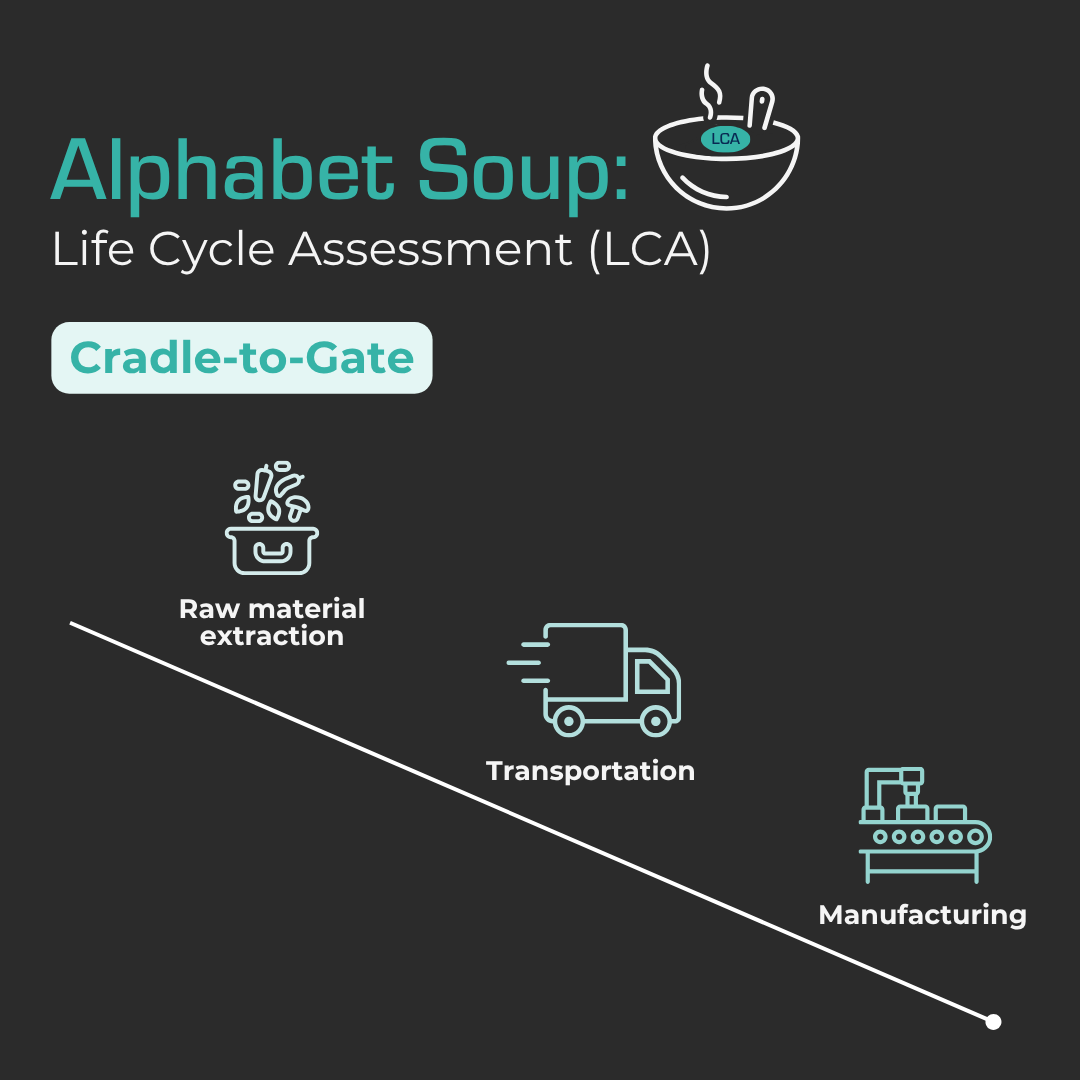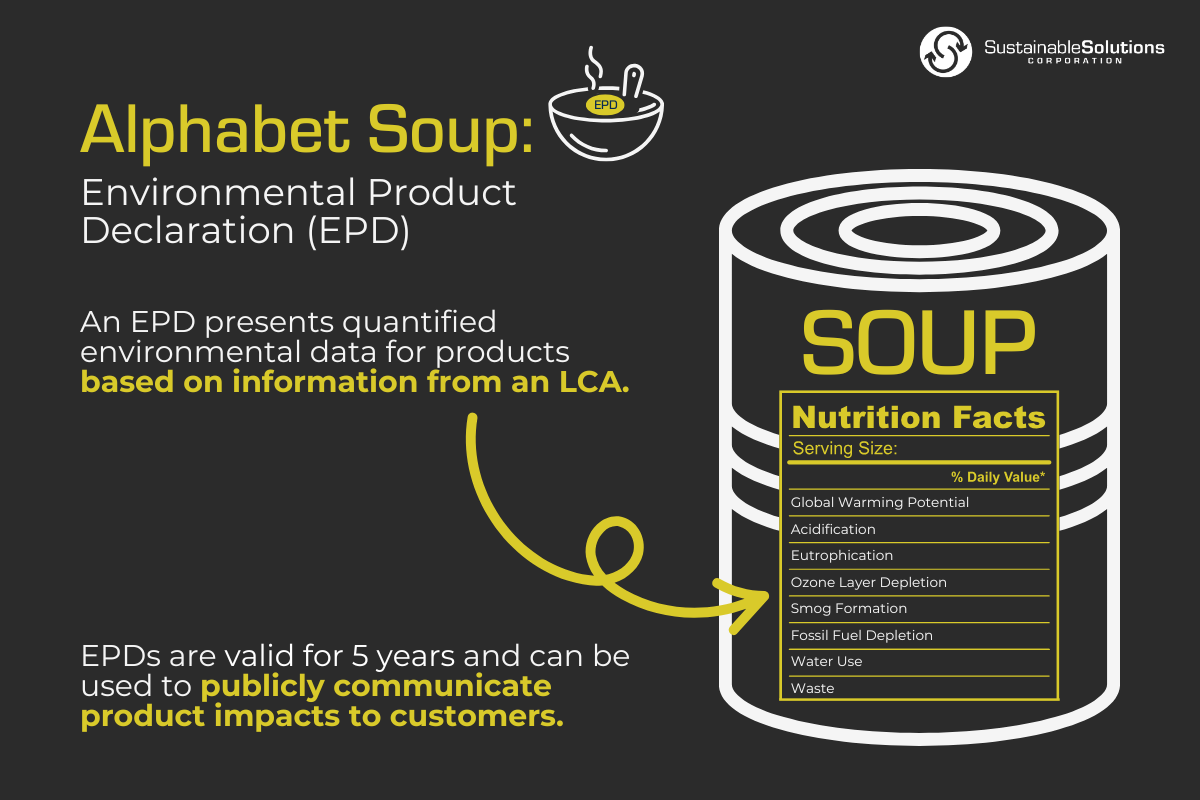Sustainability is no longer a trend — it’s a business imperative. With increasing environmental regulations and a growing consumer demand for transparency, the tools available to measure and communicate sustainability efforts have never been more critical. Two of the most effective tools in the sustainability toolkit are Life Cycle Assessments (LCA) and Environmental Product Declarations (EPD).
LCAs and EPDs build trust through transparency. By integrating these tools, businesses can enhance their environmental accountability and also gain a competitive edge in today's marketplace.
Here’s how businesses can strategically align these tools to drive significant progress toward sustainability goals:
What is a Life Cycle Assessment (LCA)?
A Life Cycle Assessment (LCA) is a holistic analysis of the potential environmental impacts and emissions from the entire life cycle of a product or material. This comprehensive evaluation covers everything from raw material extraction, manufacturing, and transportation to usage and disposal. LCAs help companies identify environmental hotspots, reduce waste, and optimize energy use across the product's life cycle, improving New Product Development (NPD) processes.
Setting the scope of your lca
The depth and the breadth of an LCA can vary considerably depending on the goal and scope of the study. The “system boundary” defines which life cycle stages are included in your analysis and is a critical factor in every LCA. Learn more about the 3 Most Common Types of LCAs here.
Cradle-to-Gate: Focuses on the environmental impact from the extraction of raw materials to the manufacturing stage
Cradle-to-Grave: Examines the entire life cycle of a product, from raw materials to its end-of-life
Comparative LCA: Compares the environmental impacts of two distinct products or processes
Why LCAs Matter
Conducting an LCA not only helps companies understand their environmental impact but also offers several key benefits:
Identifies improvement areas in materials and processes
Pinpoints environmental hotspots that can be targeted for optimization
Enables companies to respond to customer requests for transparency regarding sustainability
The Role of Environmental Product Declarations (EPD)
While LCAs form the backbone of environmental data, Environmental Product Declarations (EPDs) communicate this data in a standardized and transparent format to stakeholders. An EPD is an independently verified document that discloses the environmental life cycle impacts of a product — including metrics like Global Warming Potential (embodied carbon) and other critical environmental metrics.
Predominantly used in the building and construction industries, EPDs are gaining traction across various sectors due to their ability to meet growing demands for transparency in sustainability reporting. Importantly, EPDs also support certification requirements, such as LEED v4.1/v5 Material and Resource Credits, further enhancing a company’s green credentials.
Integrating LCAs and EPDs
The integration of LCAs and EPDs creates a powerful foundation for sustainable product development. It allows organizations to leverage detailed environmental data and turn it into actionable insights. Here’s how businesses can effectively integrate these tools:
Define the Scope and Boundaries: Before conducting an LCA, it’s crucial to define the scope, which includes setting system boundaries, (e.g. cradle-to-gate). If a Product Category Rule (PCR) exists, it will dictate the system boundaries and methodology for both LCA and EPD development. (View a concise glossary of key terms to navigate LCA and EPDs here).
Collect Data: Collecting comprehensive data on raw materials, manufacturing processes, and product usage is the foundation of both LCAs and EPDs. This data should include material sourcing, energy consumption, transportation methods, and end-of-life disposal scenarios.
Innovate Product Design: LCAs provide invaluable data for optimizing product design, reducing packaging, and improving manufacturing efficiency. Companies can also conduct scenario analysis like material exchanges, supplier variations, or other design factors. Ultimately, LCAs support the goal of minimizing environmental impacts across product generations and processes.
Develop an EPD: Once an LCA is complete, an EPD can be created to communicate the environmental impact findings. EPDs are especially useful in B2B contexts where transparency around environmental performance can influence procurement decisions. For non-building products, LCA fact sheets can be used as an alternative to EPDs.
Key Benefits of Integrating LCAs and EPDs
Integrating LCAs and EPDs yields advantages across compliance, innovation, and brand leadership:
Regulatory Readiness: As environmental regulations tighten, many regions now mandate the use of LCAs and EPDs for compliance and reporting. Buy Clean initiatives in particular set limits on embodied carbon values for specific materials — limits determined using data from EPDs.
Market Differentiation: As sustainability becomes a key buying criterion, products with EPDs can gain a competitive edge in the marketplace.
Supply Chain Optimization: LCAs reveal supply chain emissions, enabling businesses to make strategic decisions that reduce environmental impact.
Customer Trust: EPDs provide customers and stakeholders with transparent, verified data, helping to build trust and strengthen brand reputation.
Unlocking the Future of Sustainable Product Innovation
These tools provide the insight and credibility needed to reduce environmental impact and communicate that progress to the marketplace. By following best practices in data collection, boundary setting, and product innovation, organizations can turn environmental data into competitive advantage.
Meet the Expert
Cara Vought, LCACP
Senior Technical Consultant
Cara has over 13 years of experience in product stewardship and corporate sustainability strategy. She specializes in developing life cycle assessments (LCAs) and product carbon footprints, conducting independent LCA reviews to ISO standards, supporting industry associations and collaboratives in program development, and facilitating audits for sustainable manufacturing initiatives and LEED certifications.
She earned a Bachelor of Science in Chemical Engineering from the University of Delaware, with minors in Sustainable Energy Technology and Environmental Engineering. Cara also served as an adjunct professor at Jefferson University, where she taught architecture and design students how to think about materials sustainably. She believes that sustainability is an ever-evolving field that requires continuous learning and adaptation. With a passion for education, she works closely with SSC’s clients to help them expand their knowledge and integrate sustainability into their business practices.
Related Insights
This white paper outlines strategic approaches to LCAs and EPDs, the main LCA types, a readiness assessment, frequently asked questions, and a glossary of key terms.
Acronyms like LCA, EPD, and PCF are everywhere, but what do they mean, and why do they matter?This article explains these sustainability tools so you can better understand why they are essential for improving environmental performance.
In this episode of Tad Talks Sustainability, Tad talks with LCA experts from Sustainable Solutions Corporation to answer some of the most frequently asked questions they receive about LCA, EPD, and PCF.










